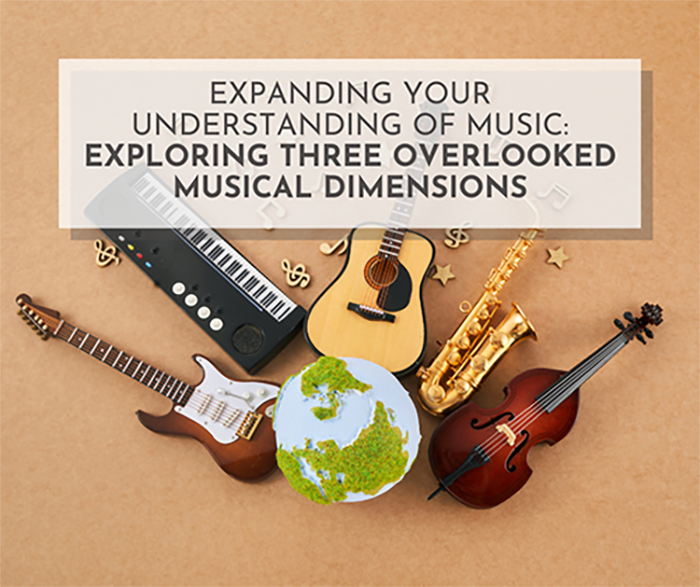Before we learn about Rhythm, Melody and Harmony, we can understand even more basic dimensions of music.

The world is musical; sounds are all around us, and rhythm, melody, and harmony abound. Whether walking through nature or listening to our favorite song, music is everywhere; it’s inescapable.
A few basic aspects of music are simple concepts and are the building blocks to understanding how music works. Almost anyone can understand them. Once you realize they exist and are always present, you’ll hear music differently, let’s dive in.
We often think of Rhythm, Melody and Harmony as the most basic musical dimensions, but even before those there are three even more basic dimensions of music that I’d love to remind you of today.
At My Music Workshop, we are lucky to have had students from young children to adults, some with zero experience and some with much experience. One of the things that we focus on when teaching young beginners is the three basic dimensions of music. They are the foundation for a much more advanced understanding of music that comes later.
Musical Dimension One: Fast/Slow
The musical term is tempo, but music is usually set to a steady tempo that doesn’t change. The speed or tempo of the music can significantly affect the way the music feels. In its simplest form, slow music will cause us to feel more relaxed, and fast music will be more energetic. This is a straightforward way to look at it and doesn’t always apply. But, the next time you listen to music, by yourself or with your kids, make a conscious effort to notice whether the music is fast or slow, what the tempo does to the music, and how it makes the music feel. What is the speed trying to convey in the music?
Musical Dimension Two: Loud/Soft
Dynamics is the musical term for volume. Now, we have a second dimension to add and overlay on the first dimension. Now, dynamics or volume is not a constant through a song or musical piece, like tempo is. As the volume changes, the song flows and gets more interesting. A song that stays at the same level tends to sound boring after a while. So, most songs go from quiet to louder and back again, at least to some degree. As you listen to music, hone in on how the song changes volume and what this does to the way the music feels.
Musical Dimension Three: High/Low
We use the term Pitch in music to describe high or low-sounding things. Full-sounding music uses many different pitches, all playing at the same time to shape the sound. Great composers use pitch to influence the emotions they are going for. Different instruments play in different ranges of pitch; some are higher pitched, like flutes, and some are lower pitched, like bass guitars. The combination of these pitches being played together gives music an element of depth. Listen closely to the instruments that are playing in the music you like. Pick out what pitch they are playing at and how the pitches change as the song moves forward.
There are tons of other “dimensions” in music, but these three, Fast/Slow (tempo), Loud/Soft (dynamics), and High/Low (pitch), are easy for most beginners to understand and pick out when they listen to music. It is great to use these to tune into music in a different way. If you are a parent who wants their child to get more involved in music, this is something you can help them hear in music. You can draw their attention to one or more of these dimensions every time.
What begins to happen is children will start to listen to music more actively; they will have something familiar that they can pick up on when they listen. This will encourage them to build a music musical ear.
We cover these concepts in some of our lessons in the “Music Basics” area inside My Music Workshop. Grab a free trial for your child and see all the fun lessons we have to offer. See you there!



